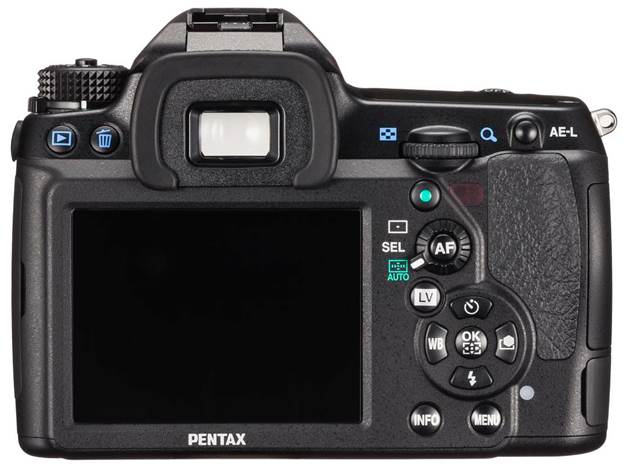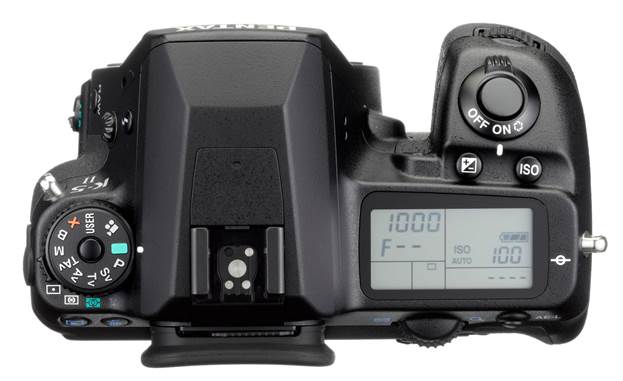We go crazy with Pentax’s latest DSLR
prosumer design.
Before this review
causes next week’s Your Letters page to overflow, let us explain why we’re
covering a $1510 + camera. Simply put, we’ve included this specific item to put
in perspective why this it better than any camera you’ll find on a phone, or in
compact form. We understand that price of its will put most people off, but
it’s worth understanding what spending this sort of money returns, mostly in
terms of picture quality.

Pentax K5 II
At first glance, the
Pentax K-5 II isn’t a huge change from the original 2011 model. The exterior is
almost identical, though this one does sport a better rear LCD panel.
When there are very
few changes on the outside you pin your hopes that the inside of nay new
product has been upgraded, and that the ‘upgrade’ i isn’t just another branding
exercise. Those hoping for a sensor resolution upgrade in this case are out of
luck, though the K-5 II uses the same Sony 16.28MP APS-C sensor as the
original. It has been adjusted a little, for noticeably less grain in low-light
conditions and a marginally greater dynamic range- but it’s a subtle
improvement, at best.

At first glance, the Pentax K-5 II isn’t
a huge change from the original 2011 model. The exterior is almost identical,
though this one does sport a better rear LCD panel.
Here, Pentax is flying
its flag atop a pole planted in the solid ground provided by its new SAFOX X
autofocus system. The firm claims it is much quicker and more accurate than
previously possible, and in operation this certainly feels the case. However,
the real star of the K-5 II’s features for me was the camera-based sensor-shift
shake reduction. This is rated to 3EV, and is compatible with all modern Pentax
lenses, irrespective of their features.
“I wanted to love this camera more,
because it exudes the legendary Pentax build quality”
The review model came
with a Pentax DA 18-135mm WR Zoom lens, which is one of the more expensive kit
options. The K-5 II can be purchased as just a body, but you can also get it
with more modest 18-55mm and 50-200mm lens options. The camera uses the KAF2
mount, allowing KAF3, KAF2 and even original K-Mount lenses to be used with it.
The only limitation, like the Nikon D5200 it competes with, is that it can’t
power those lenses designed to be driven by a professional camera body
mechanism.

The review model came with a Pentax DA
18-135mm WR Zoom lens, which is one of the more expensive kit options.
If one feature
disappointed me most it was the HDR mode, even though I did use it to produce
some good images. HDR only works in JPEG mode, and the time taken to process the
images into the finished image is long. Long enough, in fact, to put you off
using it entirely. I’d rather do bracket shooting (also available) and post
process on the PC than be made to await that long between shots.
What seems to make
this worse, perversely, is that in most other operations the K-5 II is lighting
quick, especially when focusing – it’s blindingly fast at locking onto the
focus target, even in poor light conditions- which means you’re more likely to
capture that important image than miss it. The exception to this wonderful
rapidity is the LiveView mode, which slows everything down to a crawl. Both
these situations strongly hint that Pentax didn’t use a fast enough processor
in this camera, probably as a tactical choice to preserve battery life.
Whatever the reason through camera focusing is fast, LiveView isn’t.

The K-5 II is an excellent design with
many strong features that nudge you towards taking better pictures than your
skills might normally allow.
I wanted to love this
camera more, because it exudes the legendary Pentax build quality. It is
comfortable to hold for long periods, and produces excellent results, but in
the current market, it is up against the much cheaper Nikon D5200, and its
monster 24MP sensor- and the bigger advantage that the Nikon offers is a
greater selection of lenses.
The Pentax betters he
Nikon in terms of it weather-resistant design, and its more compact form. The
scales of the K-5 II makes it the ideal camera to take on exotic holiday, where
you’ll be less burdened by your desire to take high quality images.
The K-5 II is an
excellent design with many strong features that nudge you towards taking better
pictures than your skills might normally allow. The upgrade from the K-5
probably isn’t worth it for those that have one, though it could make that
model a bargain price pretty soon.
Most people would
baulk at a camera costing $1208 just for the body, and not without good reason.
If you’re serious about photography and haven’t already committed to either
Nikon or Canon, though, the K5 II is certainly worth checking out.
A fast and elegant prosumer DSLR, for
those that can afford it.
|
Details
·
Price: K-5 II body - $1,207.98, K-5 II +
18-55mm WR - $1313.69, K-5 II + 18-55mm + 50-200mm WR - $1540.19, K-5 II +
18-135mm WR - $1691.19.
·
Manufacturer: Pentax
·
Website: www.pentax.co.uk
·
Required Spec: A passion for photography
Key features
·
16.28 megapixel APS-C sensor
·
Pentax KAF2 bayonet mount
·
In-body Shake Reduction
·
Glass Pentaprism with 100% field of view
·
3” LCD monitor with 921,000 dots
·
Live View with Contrast Detection and Phase
Matching AF
·
SAFFOX X AF module sentitive to – 3EV
·
Weather Reasistant construction
·
Magnesium alloy shell
·
7fps maximum frame rate
·
ISO range 100 to 12,800, expandable to 80 to
51,200
·
Full HD Movie Mode
·
177 Digital filters PEF and DNG RAW formats
·
Premium JPEG Quality level
Ratings
·
Features: 7/10
·
Value: 6/10
·
Overall: 7/10
|